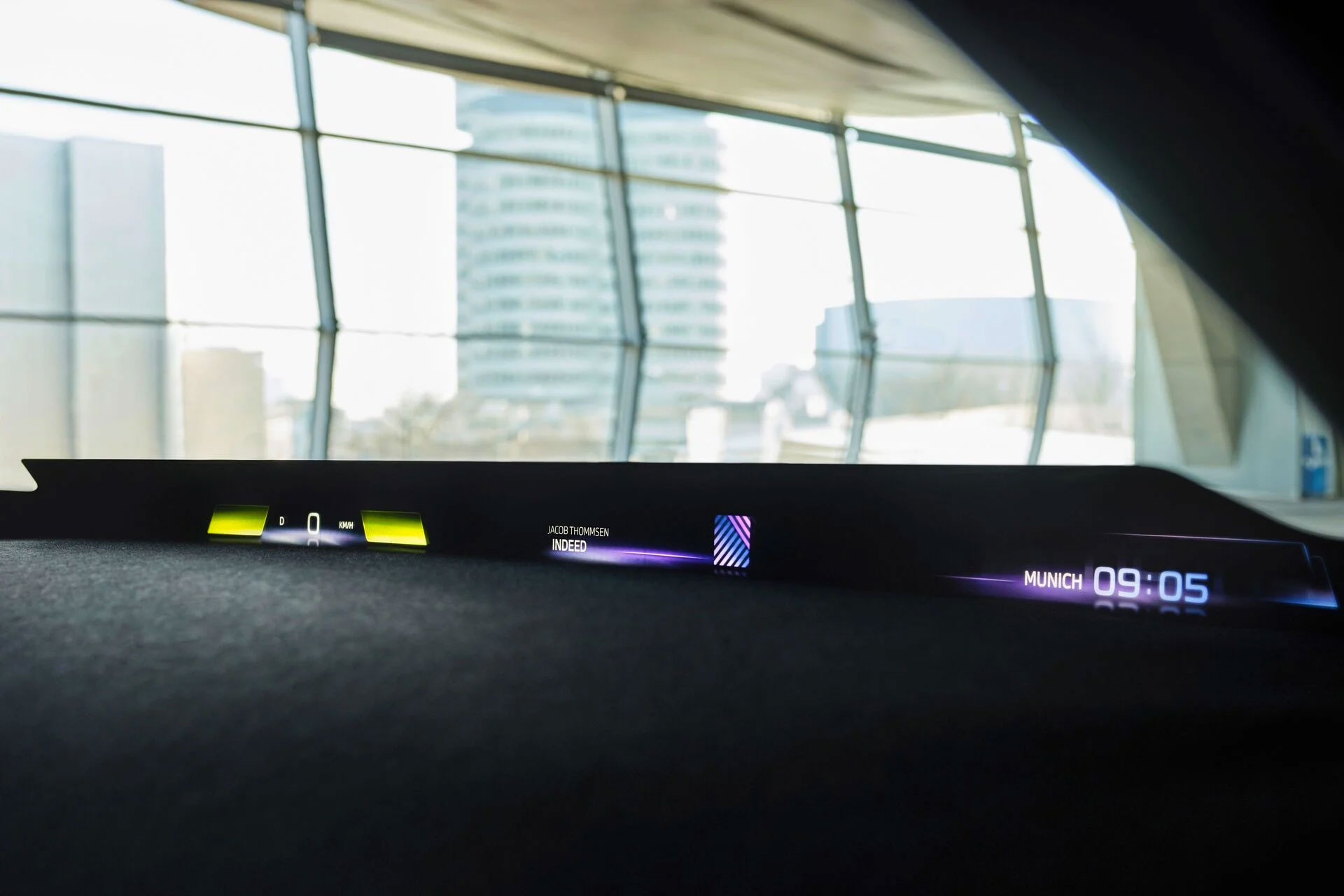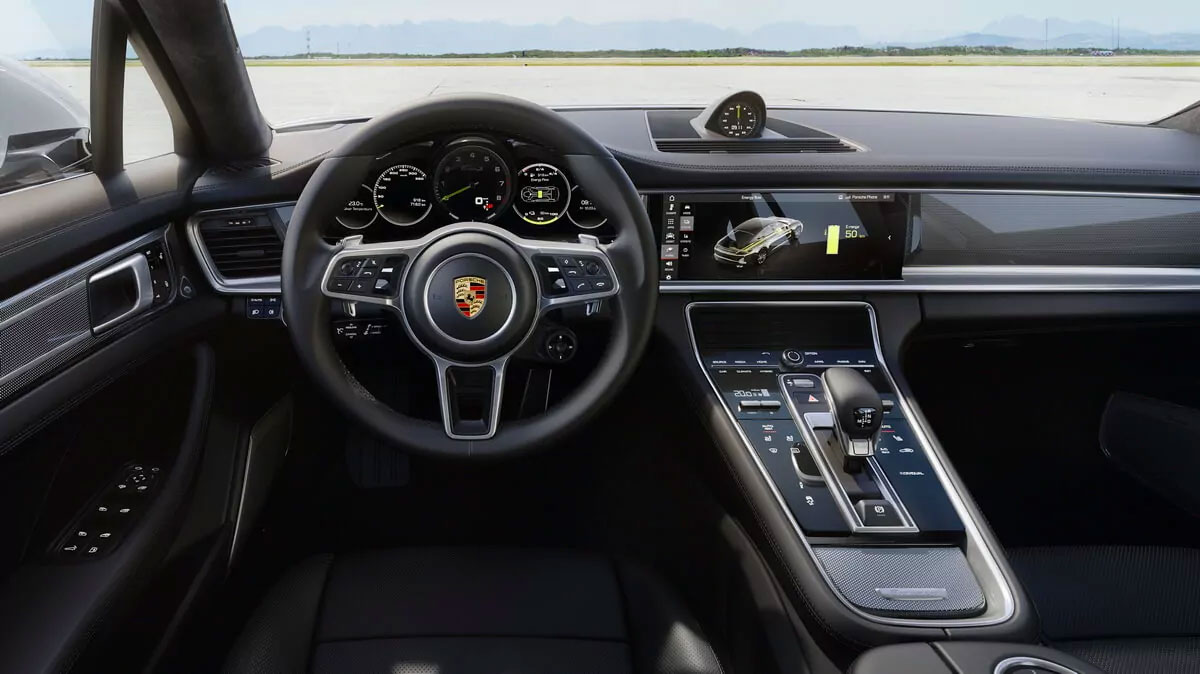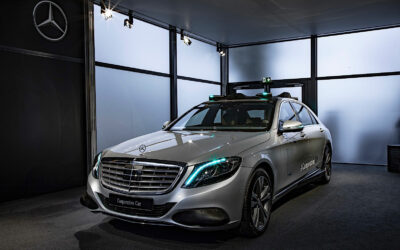Ever since the first automotive display—a couple of very small CRTs in the 1976 Aston Martin—the amount of real estate dedicated to displays has grown dramatically. As reported by Reuters, the average size globally of a vehicle’s center display in 2018 was 7.7”, projected to reach 9-10” by 2024. It’s 2024 now, and the average is…10″.
The 2012 Tesla included the first automotive touchscreen display. At 17″, it touched off an escalating size war of ever-larger-and-more numerous in-car screens providing instrument clusters, center stack controls and displays, and infotainment displays.
So, automobiles are equipped with more and larger displays year over year, and this trend seems likely to continue. Will it eventually lead to widespread adoption of pillar-to-pillar (P2P) displays? Business projections show a total P2P business revenue of just $36m in 2022, but some have forecast that the P2P display market will increase 46.2 per cent through 2032 to reach $1.65bn.
Some of these P2P displays, and other larger and curved display configurations now showing up in multiple automobiles, use OLED technology on account of its visual quality and flexibility. However, as an emissive display type, OLED displays require careful testing to ensure uniformity. Typically, a high-resolution imaging photometer or colorimeter is needed to measure the pixels and subpixels. Then an adjustment factor can be computed and applied to correct the display.
Why screens are getting bigger
It is said that the main reason screens are growing wider is that users expect this, in parallel to smartphones, tablets, and TVs—the idea being that consumers have been trained to associate bigger/wider screens with new technology.
Functionally, various ADAS functions require the ability to display information. To support CarPlay and the like, the display must be a minimum of 8″ and a certain resolution, and this minimum requirement is growing as the need becomes acknowledged that information must be provided in less distracting ways, even as there is more of it to provide.
And wider display supports the vaunted immersive experience, declared by automakers and suppliers as the new pinnacle of automotive interiors. P2P displays are said to provide an « immersive » experience for the driver. Typically, these dashboards integrate multiple component displays beneath a single sheet of touchscreen glass. So far, only a few P2P displays have been commercially launched, though they show up a lot in concept vehicles.
P2P in real cars

Cadillac
Cadillac’s Celestiq is one of the few, it includes a 55″, pillar-to-pillar digital display with ‘electronic digital blinds’ (digital blocking) which GM describes as an active privacy technology that allows passengers to watch videos while blocking them from the driver’s view.
Mercedes

The 56″ MBUX Hyperscreen is one of the highlights in the EQS. with software capable of ‘learning’, the display and controls adapt to the user. The system makes personalized suggestions for numerous infotainment, comfort and vehicle functions. It is a ‘zero layer’ system: the user needn’t scroll through submenus or give voice commands.
The MBUX Hyperscreen is an example of digital/analogue design fusion: several displays appear to blend seamlessly, resulting in an impressive, curved screen band. Air outlets are integrated into this large digital surface to connect the digital and physical world.
Produced by LG Displays, this EQS Hyperscreen incorporates an LCD instrument cluster display and two flexible OLED screens for center stack and passenger displays.
Lincoln

Ford’s Lincoln luxury brand says their display system « brings enhanced levels of customization and convenience » to the in-car experience, and that it is « presented in an engaging, seamless and connected form ». They say their panoramic display is the largest in its class, paired with an 11.1″ center-stack touchscreen.
When parked, Lincoln drivers can surf the web as they would on a phone or tablet using the Vivaldi browser, which Polestar also debuted an updated version of this month. Google Chrome is coming soon, Ford says, « with a Bluetooth-connected keyboard to make typing easier. »
Sony – Honda

In the Sony-Honda Afeela, there’s a panoramic screen that spans the entire front area. Drivers get clear driving information while passengers get an immersive entertainment experience. An unusual steering yoke ensures an unobstructed screen view for the driver.
BMW

BMW is taking a slightly different approach, announcing a panoramic full-width HUD in a 2025 model. It’s called BMW Panoramic Vision, and supports driver engagement in the maker’s Neue Klasse series of cars.
For the first time this projection technology allows visible displays across the entire width of the windshield for all passengers. BMW Panoramic Vision shows information relevant for the driver and passengers with a higher light intensity and contrast onto a dark-coated area at the lower edge of the windshield. This creates an extremely sharp image always visible across the full width of the glass. Information relevant to the driving situation is always in the right place at the right time.
Hyundai-Kia

Hyundai plans to install a 24-to-27″ OLED screen this year, and the Genesis GV70 has a 27″ OLED display produced by LG Display.
LG Display was one of the first companies to identify the automotive industry as a potential market for their AMOLED displays. LGD supplies OLED panels to automakers, including Mercedes and GM (for Cadillacs). In 2021, it was estimated that LGD holds over 90 per cent of the market for automotive AMOLEDs, and the company is now considering building a dedicated AMOLED production line for automotive displays.
Porsche

One highlight of the Porsche Panamera is its display and control concept: the Porsche Advanced Cockpit with touch-sensitive panels and individually configurable displays. The interactive cockpit takes the form of two seven-inch screens.
A 12.3-inch touchscreen in the center console functions as a central PCM control and display unit, via which the driver can access various items of hybrid-specific information.
Aehra

The Milanese startup Aehra in June 2022 teased the launch of a high-end electric crossover. The Impeto (SUV) and Estasi (Sedan) are touted in terms of their architectural space efficiency and features to prioritize user convenience, comfort, and wellbeing. The company says all factors lead to ‘desire-to-drive’, contributing to making life on board Aehra products a pleasant and unique experience.
The distinctive, sportscar-like design maximizes aerodynamics and efficiency plus interior space. The car’s shortened front overhang, with the base of the windshield pulled dramatically forward, creates a cab-forward, single-line design—unprecedented in the SUV and sedan segments.
Stellantis (Ram)

Ram is taking a more traditional approach to displays. The 1500 Revolution BEV concept truck features a display made up of two screens. The lower unit has three different positions: minimal, extended and full-screen view. It can also be removed and used in different areas of the pickup truck.
Continental

Continental last year unveiled their ultrawide ‘In2visible’ HMI. Measuring 1.29m wide, the surface comes with an integrated, haptically-supported control panel. Optional dimming of individual areas means the interface can save power, improve readability and reduce distractions.
Rightware

Premiered at CES 2023, the Snapdragon Digital Chassis concept vehicle uses a next-generation Snapdragon Digital Cockpit Platform from Qualcomm, leveraging Android S and QNX 7.1, all seamlessly integrated and performance-optimized with Kanzi One.
Conclusion
A panoramic display can be a key element of a cockpit offering an immersive experience for drivers and passengers. The display can include the functions of an instrument cluster, vehicle control center, and infotainment all in one.
Widening screens can pave a way for the future of much richer digital services inside the vehicle, for various use cases and scenarios. Cars will become increasingly ‘intelligent’, and the in-car digital services will steadily grow and cover more use cases. In-car digital experiences could become one of the most important touchpoints in the digital ecosystem.
It seems most likely that over the coming years, the number and size of screen inside the vehicle will increase, probably rapidly. Limits are restricted only by the physical car interior space and the costs of the screens.
Or…maybe not. When Tata Motors presented their Avinya concept, they demonstrated a future wherein voice controls, and not screens, will be the hub of the automobile interior. We shall have to see!







